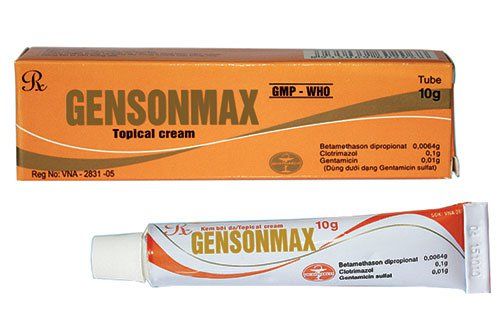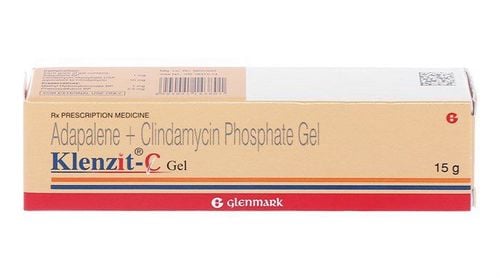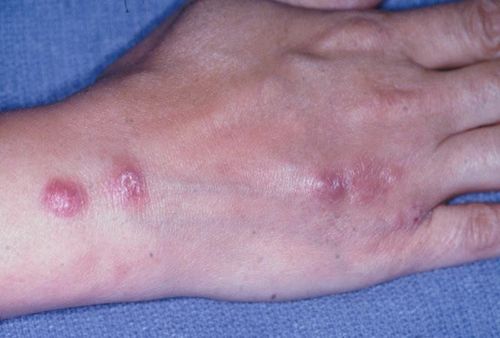This is an automatically translated article.
Infectious granulomas, also known as vasodilating granulomas, present as a red, glossy, round or oval lump in the skin, resembling a strawberry or raw piece of meat. This is a benign but annoying disease that causes entanglement and bleeding. Anyone can get it, but it's more common in children and young adults.
1. What is infectious granulomatosis?
Infectious granuloma is an inflammatory response that manifests as a flesh-colored, moist, or hard-shelled lump. Red vascular tumors are often scattered in the skin and mucous membranes, consisting of capillaries that grow abnormally in an edematous matrix. Lesions caused by infectious granulomatosis of vascular tissue are not of bacterial origin and are not intrinsically a true granuloma. However, symptoms often progress quickly, often at the site of recent trauma (especially the extremities and face). Lesions are usually no larger than 2 cm in diameter, with vascular and fibrous response to injury.
The epidermis above the granuloma becomes thin, fragile, fragile, and bleeds, and the surrounding skin may become inflamed, surrounded by a well-delimited epiglottis. In pregnant women, infected granulomas can become large and raised (called pregnancy tumor or gingival vasodilatation).
MORE: Understanding allergic granulomatosis and vasculitis
2. Symptoms of granulomatosis
Granulomatous disease manifests as small, red, brown-red or green-black dots, rapidly growing over a few days to a few weeks, usually between 2mm - 2cm in size, easy to bleed, may ulcerate, form scabs, causing pain. Most patients present only a single red nodule. The most common sites for infected granulomas are the head, neck, upper body, hands (especially fingers) and feet. Pregnant women often get it in their mouth.
About 25% of patients with granulomatous skin have the following skin problems:
Skin color change: The area of skin where the granuloma occurs may be darker or lighter than usual; Lesions: Sores caused by infected granulomas are unsightly, especially on the nose, cheeks and ears; Rash: A red or purple-red rash appears, usually on the legs or ankles; Tumors, small tumors: Growth under the skin, often around lesions caused by scars or tattoos.

Hình ảnh người bệnh mắc u hạt nhiễm khuẩn tại vùng da tay
Sometimes, granulomatosis affects the eye but is not accompanied by any symptoms. Eye symptoms, if any, include:
Redness and blurred vision; Eyesore ; Sensitive to light.
3. Causes of infectious granulomas
The cause of the disease has not been clearly identified. Inflamed cells and tissues gather and spread into small bumps or tumors. These tumors, when growing large, will interfere with the function of the part where it causes inflammation.
Several factors create lesions of infectious granulomas include:
Staphylococcus aureus infection; After a minor trauma (eg, a needle stick) caused the injury; Influence from hormones: the disease can be seen in pregnant women or those taking birth control pills; side effects from certain medications such as oral retinoids (acitretin or isotretinoin), or protease inhibitors; Viral infection; Small vascular malformation. Granulomatous cysts can affect both men and women, but are more common in women. Patients are usually between the ages of 15 and 65 years. The risk factors for infectious granulomatous disease are:
Family history: Chances are increased if someone in the family has had the disease; Born with a weak immune system or a problem with an autoimmune disorder; Pollution of living environment or lack of clean water.

Tiền sử gia đình là một trong các yếu tố nguy cơ mắc bệnh u hạt nhiễm khuẩn
4. Diagnosis and treatment of infectious granulomas
4.1. Diagnosis of infectious granulomas is mainly based on history and clinical symptoms. Performing a histopathologic biopsy helps your doctor rule out other conditions, such as colorless melanoma. The typical appearance of infected granulomatous tissue is a lobular collection of blood vessels within an inflamed tissue structure.
This is an essential analytical technique for all tissues to be removed because these lesions are sometimes very similar to melanoma or other malignancies and therefore need to be differentiated.
4.2. Treatment Treatment for infectious granulomas will depend on the size of the tumor, where it occurs in the body, and the specific cause.
For pregnant women, the damage will go away after childbirth, no need to treat if there are no symptoms such as bleeding or a lot of pain. This helps to ensure the safety of the developing fetus. After giving birth, if the tumor does not go away, the doctor will apply the following treatment measures.
In case of granuloma infection due to drug use, it is necessary to stop using suspected drugs as prescribed by the doctor.
Infectious granulomas of the eye can be removed surgically or with corticosteroid ointments to reduce inflammation.
Methods of removing large lesions caused by granulomatosis :
Curret removal of the tumor; Laser excision; Cryosurgery: Removal of the lesion with high-pressure cold nitrogen; Currently, scientists are working on new, non-invasive therapies, especially for children. Several studies have shown that topical application of timolol is effective in gradually reducing lesion size without causing serious side effects. However, the disease still has a risk of recurrence after treatment.

Bác sĩ có thể sử dụng laser trong điều trị u hạt nhiễm khuẩn
5. Controlling infectious granulomas
Granulomatous disease will be improved if you follow a suitable lifestyle as follows:
Eat a light diet, reduce salt in your diet while taking steroids Blood pressure check and diabetes test Vaccinate pneumococcal vaccine pneumococcal pneumonia Do not arbitrarily stop taking medicine or change the dosage unless prescribed by a doctor Do not arbitrarily pry and remove the tumor at home Quit smoking Limit direct sun exposure. In summary, infectious granulomas are a benign tumor, but they can also cause a lot of trouble for the patient, especially when the tumor is hemorrhagic. Besides, the tumors on the skin also affect the aesthetic appearance. Therefore, if you have problems with this disease, go to a specialized medical facility for examination and appropriate treatment.
Vinmec International General Hospital is the address for examination, treatment and prevention of diseases, including oncology. When performing the examination process at Vinmec, customers will be welcomed and used the modern facilities and machinery system along with perfect medical services under the guidance and advice of the doctors. Good doctors, well-trained both at home and abroad.
Please dial HOTLINE for more information or register for an appointment HERE. Download MyVinmec app to make appointments faster and to manage your bookings easily.
Reference source: msdmanuals.com












